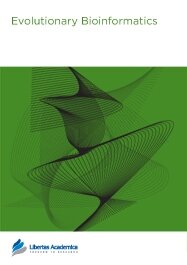

Publication Date: 19 Jun 2012
Type: Original Research
Journal: Evolutionary Bioinformatics
Citation: Evolutionary Bioinformatics 2012:8 229-259
doi: 10.4137/EBO.S9405

G-protein coupled receptors (GPCRs) are one of the largest groups of membrane proteins and are popular drug targets. The current work attempts to perform cross-genome phylogeny on GPCRs from two widely different taxa, human versus C. elegans genomes and to address the issues on evolutionary plasticity, to identify functionally related genes, orthologous relationship, and ligand binding properties by effective bioinformatic approaches. Through RPS blast around 1106 nematode GPCRs were given chance to associate with previously established 8 types of human GPCR profiles at varying E-value thresholds and resulted 32 clusters were illustrating co-clustering and class-specific retainsionship. In the significant thresholds, 81% of the C. elegans GPCRs were associated with 32 clusters and 27 C. elegans GPCRs (2%) inferred for orthology. 177 hypothetical proteins were observed in cluster association and could be reliably associated with one of 32 clusters. Several nematode-specific GPCR clades were observed suggesting lineage-specific functional recruitment in response to environment.
PDF (2.18 MB PDF FORMAT)
RIS citation (ENDNOTE, REFERENCE MANAGER, PROCITE, REFWORKS)
Supplementary Files 1 (268.72 KB ZIP FORMAT)
BibTex citation (BIBDESK, LATEX)
XML
PMC HTML
I must say publishing with Evolutionary Bioinformatics was a great and partially unexpected experience. It allowed me to understand the name 'Libertas Academica' is not just a name but a real issue. The reviewers offered us stringent, rigorous but totally unprejudiced comments, the editor supported us and the paper visibility was very good. Thank you again.

All authors are surveyed after their articles are published. Authors are asked to rate their experience in a variety of areas, and their responses help us to monitor our performance. Presented here are their responses in some key areas. No 'poor' or 'very poor' responses were received; these are represented in the 'other' category.See Our Results
Copyright © 2013 Libertas Academica Ltd (except open access articles and accompanying metadata and supplementary files.)
Facebook Google+ Twitter
Pinterest Tumblr YouTube